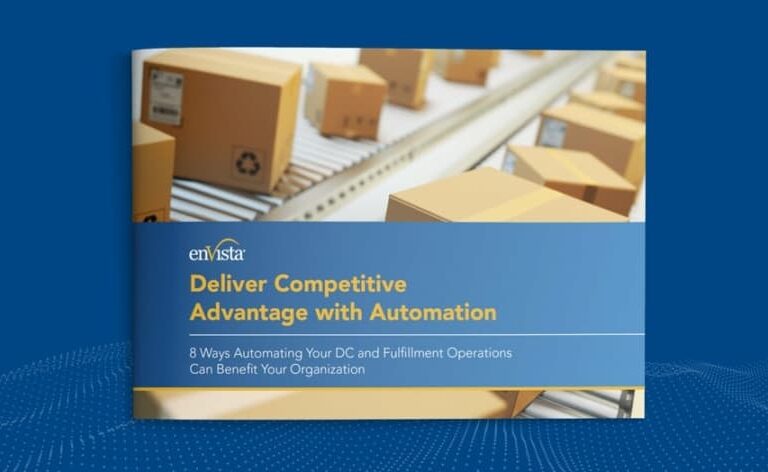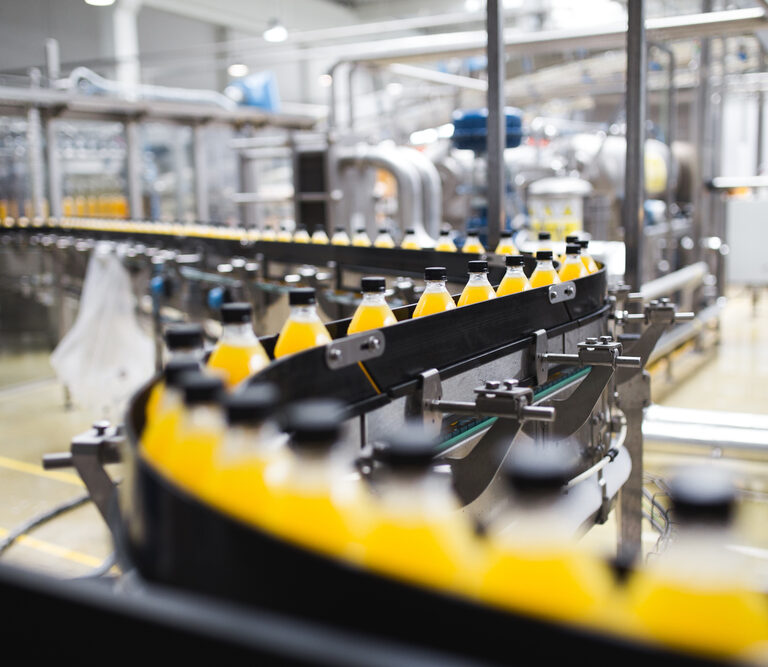To keep up with the demands of the industry, automotive manufacturers need to operate with high levels of efficiency, precision and cost-effectiveness. Robotics are helping automotive manufacturers make great strides toward these goals, revolutionising manufacturing processes and driving remarkable advancements.
This blog explains the benefits of robotics in automotive manufacturing, explores the latest trends and innovations, outlines best practices for implementation and highlights the strategic considerations for leveraging robotics to gain a competitive edge.
Benefits of Robotics in Automotive Manufacturing
Welding is one of the most hazardous yet essential processes in car production. The use of robots to carry out repetitive welding tasks helps protect human workers from potential risks, such as fume and heat exposure. It also helps ensure consistent, reliable welds. Robots used in painting and coating help create a flawless finish while reducing material waste, directly improving profitability.
The benefits of robotics in automotive manufacturing, such as higher efficiency, superior quality and increased competitiveness in the global market, are a major reason for its worldwide adoption. With this increased rate of adoption, robotics integration in automotive manufacturing isn’t just a perk; it’s a must to keep up with the demands of the supply chain and modern commerce.
1. Increased Efficiency and Productivity
Robots streamline repetitive tasks, such as assembly line operations and parts handling, with unmatched speed, precision and consistency. This allows human workers to focus on higher-value responsibility, such as problem solving. For example, robots can move heavy parts, perform assembly tasks or spray paint parts of vehicles.
By automating these manual processes, robotics improves throughput, accelerates production cycles and eliminates bottlenecks. It also helps automotive manufacturers optimise their operations, achieve higher output and leverage their workforce for more complex and strategic endeavors.
2. Cost Reduction and Improved Profitability
The integration of robotics in automotive manufacturing leads to significant cost reductions and improved profitability. Robots minimise labour costs by efficiently handling tasks that would otherwise require substantial human resources.
Their consistent and accurate performance reduces errors, rework and material waste. By streamlining operations and optimising resource allocation, automotive manufacturers can attain a more cost-effective structure, drive labour costs down and enhance profitability.
3. Enhanced Quality Control and Precision
When well-configured and maintained, robotic systems ensure that every weld or paint layer meets exact specifications. Thanks to machine vision inspections and precisely calibrated motions, robotics helps to reduce defects and avoid common sources of human error. This consistency enhances brand reputation and reduces costly recalls.
Quality control is critical in the automotive industry to ensure customer satisfaction and meet rigorous standards. Robotics offers unparalleled precision and accuracy. Equipped with advanced sensors and vision systems, robots in automotive manufacturing excel in inspecting components, detecting defects and performing intricate quality checks. This leads to improved product quality, reduced scrap rates and enhanced customer confidence.
4. Streamlined Supply Chain Management
Incorporating robotics into automotive manufacturing spaces also optimises supply chain management. Robots, such as autonomous guided vehicles (AGVs), efficiently handle material handling and logistics within the manufacturing facility.
AGVs and robotic material handlers maintain smooth movement of parts across the factory. They can work quickly and reliably, without getting tired or risking injury. Robots can respond to supply chain fluctuations, reducing bottlenecks and improving overall supply chain flow.
They transport components, subassemblies and finished products, ensuring smooth material flow and minimising delays. Real-time data capture and integration with enterprise resource planning (ERP) systems can assist with robotics. ERPs give companies complete visibility and control over inventory management, demand forecasting and supply chain optimisation.
Trends and Innovations in Robotics for Automotive Manufacturing
Leading automakers are also experimenting with humanoid robots augmented with intelligent computer vision capabilities for tasks such as complex assembly and quality inspection. While still in pilot phases, this innovation could bridge gaps between automation and human dexterity, signaling the next frontier in robotics.
Like all industries embracing modern technology, automotive manufacturing is constantly evolving and allowing robotics to drive innovation and efficiency. With exciting trends like collaborative robots and autonomous mobile robots, the industry is pioneering industrial robotics and smart manufacturing environments.
Collaborative Robots (Cobots) and Human-Robot Collaboration
Cobots have revolutionised automotive manufacturing by facilitating human-robot collaboration on the assembly line. They excel at performing tasks that require dexterity, agility and human judgment while ensuring the safety of human workers. This joint approach enhances productivity, flexibility and efficiency, with humans and robots complementing each other’s strengths.
Autonomous Guided Vehicles for Material Handling
AGVs transport parts between assembly stations and storage areas. These robots can work accurately and quickly for long periods, freeing staff from repetitive transport tasks that could cause injury and reducing the risk of delays or errors.
Autonomous guided vehicles have streamlined material handling in automotive manufacturing. These robotic vehicles, equipped with sensors and navigation systems, efficiently transport materials within the manufacturing facility. AGVs also automate material flow. With their precision and reliability, they optimise material handling processes and minimise the risk of errors.
Machine Vision and Artificial Intelligence Applications
Artificial intelligence (AI) and machine vision are transforming predictive maintenance in automotive plants. They’ve also revolutionised automotive manufacturing. By analysing real-time sensor data from robotic systems, AI algorithms can detect early signs of wear or misalignment. Instead of waiting for a breakdown, maintenance teams receive alerts to service equipment at the optimal time. This reduces unplanned downtime, extends the life of expensive robotics and ensures production lines keep moving.
Vision systems use cameras, sensors and AI algorithms to perform complex tasks, such as object recognition, defect detection and quality control. By leveraging machine vision and AI, automotive manufacturers can enhance inspection accuracy, automate quality checks and ensure consistent product output.
3D Printing and Additive Manufacturing in Automotive Production
We’re also seeing wider adoption of 3D printing and additive manufacturing technologies during automotive production, as it allows for rapid prototyping of complex components. This can speed up the design cycle and, depending on the nature of the part in question, allow for small-batch production without investing in expensive tooling, such as new molds.
Automotive manufacturers leverage 3D printing for cost savings, customisation options and rapid prototyping, accelerating the product development cycle.
Best Practices for Implementing Robotics in Automotive Manufacturing
Despite the overwhelming benefits of robotics and automation in automotive manufacturing, adopting these technologies takes planning and intentionality to keep the supply chain and production process uninterrupted. Companies need to identify their pain points, research the best solutions and brands and bring their workforce up to speed on new protocols. Adhering to these best practices can help companies maximise the benefits and overcome potential challenges.
Before investing in robotics, manufacturers should perform a cost-benefit analysis that considers the initial capital expenditure, long-term gains in efficiency, the safety of human workers, training costs and scalability. Ongoing training is essential to ensure reliable operations and continuous improvement.
Cross-functional collaboration between IT for system integration, HR for workforce planning and operations is essential to maximise robotics investments across the business.
Assessing Automation Opportunities and Feasibility
Before implementing robotics, a thorough assessment is crucial to identify automation opportunities and evaluate their feasibility within current operations. This includes analysing process complexity, identifying bottlenecks and estimating the potential return on investment.
Evaluate tasks for repetitiveness, precision requirements and health and safety challenges to determine which processes are candidates for robotic automation. Consider working with robotics process automation consultants for insights and guidance throughout this assessment process.
Choosing the Right Robotic Systems and Technologies
Selecting the appropriate robotic systems and technologies is another key element to successful implementation. Considerations include task requirements, payload capacity, reach, speed and accuracy of the technology. Collaborating with experienced robotics integrators and suppliers can help with selecting the best fit for your specific manufacturing needs.
Ensuring Smooth Integration with Existing Processes
Seamless integration of robotics with existing processes is vital for optimal results. Thorough planning should account for space requirements, workflow adjustments and employee expertise. Integration planning should be a multistep process that includes system testing, cross-department collaboration and adjustments to current workflows to ensure seamless operation. Collaboration between the robotics team, process engineers and key stakeholders, such as production personnel, guarantees a smooth transition and minimal disruption.
Training and Upskilling the Workforce
Introducing robotics in the manufacturing environment necessitates upskilling the workforce to collaborate with and operate alongside robots effectively. Training programs familiarise employees with robotic systems, safety protocols and the necessary skills to work in a human-robot collaborative environment. Investment in employee development enables them to embrace new roles and contribute to the success of automation initiatives.
Strategic Considerations for Leveraging Robotics in Automotive Manufacturing
Robotics integration is a significant change that must be worked into a company’s business strategy. By strategically leveraging robotics, automotive manufacturers can enhance their competitive edge and position themselves for long-term success in a rapidly evolving industry.
A strategic robotics plan should extend beyond immediate cost savings. Automakers increasingly evaluate robotics through the lens of sustainability. It has the potential to reduce material waste during painting, reduce damage and waste in manufacturing and minimise energy use in assembly lines. To ensure long-term scalability, leaders should consider vendor reliability and support lifecycles when making procurement decisions.
Aligning Robotics with Business Goals and Objectives
Aligning robotics initiatives with overarching business goals and objectives is crucial if you want to reap all of their benefits. Identifying key performance indicators that robotics can support, such as reduced cycle times and more consistent production quality, is essential. With those factors in mind, leaders can align robotics investments with business objectives, ensuring that automation efforts deliver tangible value and contribute to long-term success.
Addressing Potential Challenges and Risks
Implementing robotics in automotive manufacturing may present challenges and risks, including technical complexities, change management and workforce concerns. Common concerns include downtime, costly or time-consuming maintenance requirements and vendor issues.
Don’t let these risks deter you. Instead, carefully consider and plan for them. Identifying and addressing these challenges proactively through effective communication, stakeholder engagement and robust change management strategies ensures successful implementation and adoption.
Ensuring Cybersecurity and Data Protection
As robotics and automation rely on digital connectivity, ensuring robust cybersecurity and data protection is paramount. Automotive manufacturers must implement stringent security measures, including network segregation, access controls, encryption and regular vulnerability assessments. By prioritising cybersecurity, organisations safeguard sensitive data, protect intellectual property and mitigate potential cyber threats.
Adapting to Future Advancements and Industry Disruptions
The field of robotics in automotive manufacturing continuously evolves. Organisations must stay informed about the latest advancements, innovations and industry disruptions to maintain a competitive edge. Choose modular systems to enable your organisation to adapt to emerging technologies, creating future-proof systems and pathways for improvement. Embrace a culture of continuous learning, collaboration with technology partners and a proactive approach to adopting new technologies.
Perfect Your Robotics Strategy with enVista
Robotics has the power to revolutionise automotive manufacturing, unlocking unparalleled efficiency, precision and cost-effectiveness. By embracing robotics, organisations can optimise operations, enhance quality control, streamline supply chain management and gain a competitive advantage. Staying informed, seeking expert guidance and proactively embracing automation are essential for automotive manufacturers to thrive.
enVista helps automotive manufacturers move beyond adopting robotics as isolated tools. Our experts partner with you to align automation investments with broader supply chain goals, creating a measurable strategic advantage.
Contact us to explore how our automotive manufacturing consulting experts can help your organisation.





